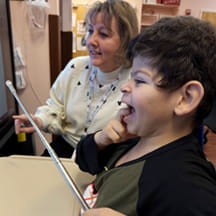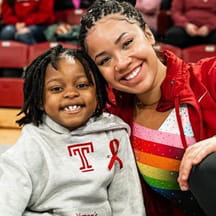Once President Trump signed the Advancing Care for Exceptional Kids Act (ACE Kids Act), health care organizations started to explore provisions in the law designed to support better care for children with medical complexity. Many of these provisions align with quality improvement strategies in evidence-based research including the national demonstration, Coordinating All Resources Effectively (CARE) Award. The final award paper highlighting results was released in the April 2020 edition of Pediatrics. This is the first large multi-center study—including hospital-based complex care clinics and primary care sites—assessing the effect of a comprehensive care management program in children with complex medical conditions.
David Bergman, M.D., associate professor of Pediatrics, Lucile Packard Children's Hospital Stanford in Palo Alto, California, was one of the lead authors on the study. He was the CARE Award medical director and helped oversee the three-year, $23 million Health Care Innovation Award from the Center for Medicare and Medicaid Innovation (CMMI).
Bergman's analysis of the work showed a:
- 4.6% decrease in total per member per year (PMPY) spend for the enrolled group
- 7.7% reduction in inpatient spend PMPY
- 11.6% reduction in emergency department spend PMPY
Children's Hospitals Today caught up with Bergman to discuss the progress and insights that resulted from the CARE Award's efforts and how the work may help children's hospitals prepare for ACE Kids Act implementation.
The CARE Award focused on care transformation through dynamic care teams and customized access plans. How did families react to the patient care structure?
We were able to document that families really felt they had a better experience with shared decision making and communication with their doctors. The access plan truly enabled patients to contact their providers and clinicians in a timely way. Families knew who to call, when to call and how best to reach them. When their child gets sick, it gives them an alternative to just rushing out to the emergency department (ED). Once you were able to keep patients out of the ED, you're basically markedly reducing their likelihood of hospitalizations. We were able to reduce the hospitalization rate, and, as a consequence, we were able to reduce ED spending.
What are a few of the foundational resources needed for this care model?
What made these programs run were the care coordinators. This group of full-time professionals looked at this issue of care coordination. That core component was primary in the mind of families. Robust family engagement also needs to be in place. In the beginning, hospitals thought they had family involvement, but over time they realized they really didn't have true family engagement. They had to create systems where families were equal partners who brought that set of knowledge.
Providers need a revised way of looking at workflows. This can't be done with a standard visit. You need longer visits to conduct this type of care. That leads to the necessity of the alignment of your reimbursement system with the kind of work you're doing. It's not paid for in the fee-for-service system.
Can the care model be replicated outside of the children's hospital?
Children with complex medical conditions need to have a multidisciplinary team but that doesn't have to take place within your children's hospital. You need to have a setting where kids with complex medical conditions are cared for by not just a single physician, but usually a physician, a nurse practitioner, care coordinators, social workers, often a nutritionist and a case manager. It's just too much for a single pediatric practice to try and coordinate care among these multiple entities on their own.
How does this work prepare hospitals for ACE Kids Act implementation?
The work done in the CARE Award provides an evidence base. These efforts created the core elements of a toolbox. We've developed models and written white papers that show how families are our actual partners. We now have evidence to show that this approach does decrease spend and does decrease utilization while improving the patient experience and the quality of life. This experience suggests what variable to track, what kind of meetings to have, how often to contact each other and how often we need to get face to face. Having that kind of context is important. These efforts created the core elements of a toolbox that contribute to a larger body of knowledge in the industry.


